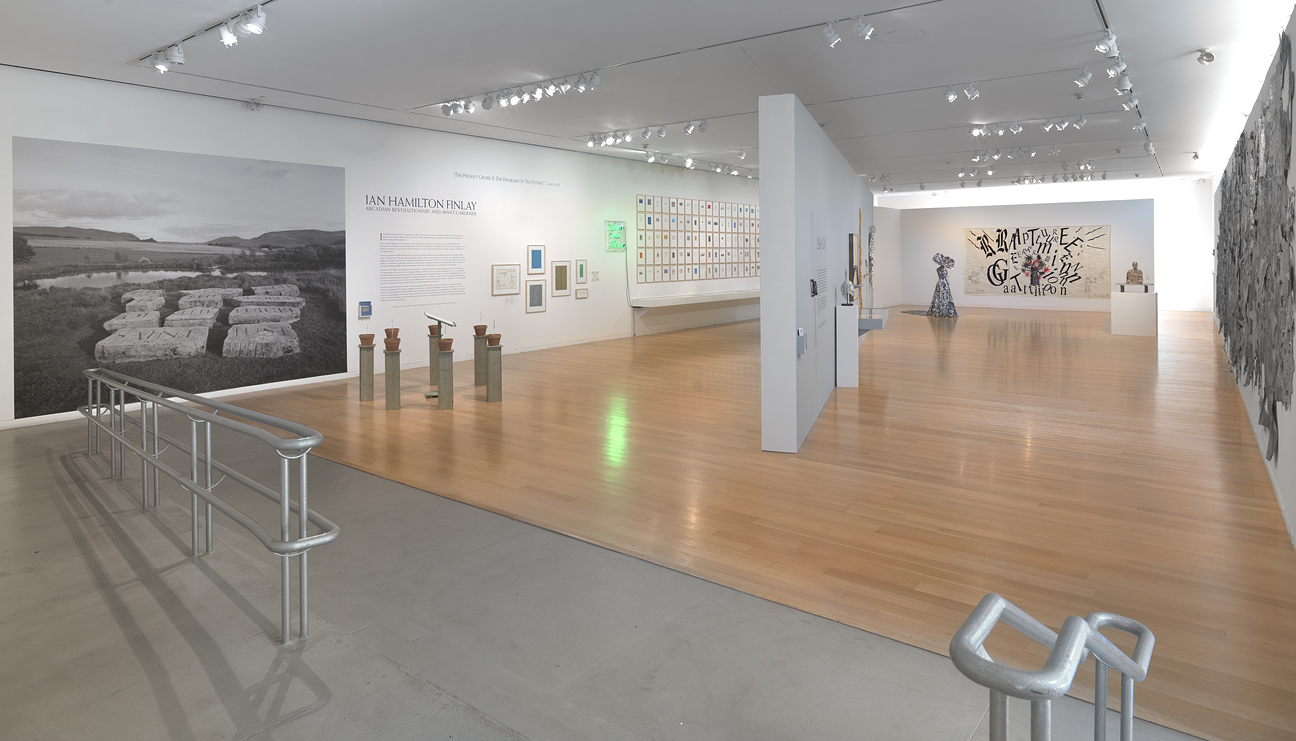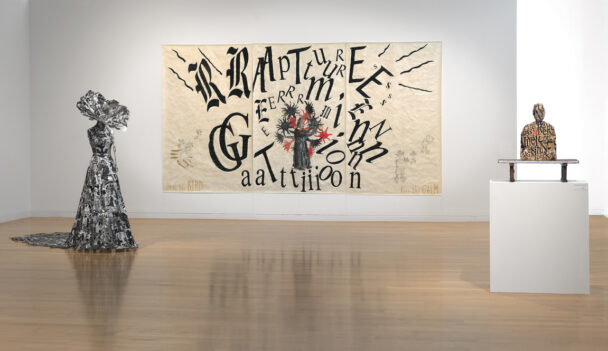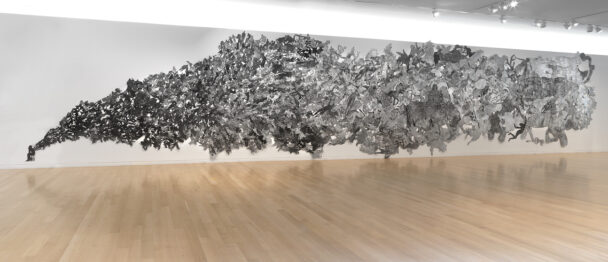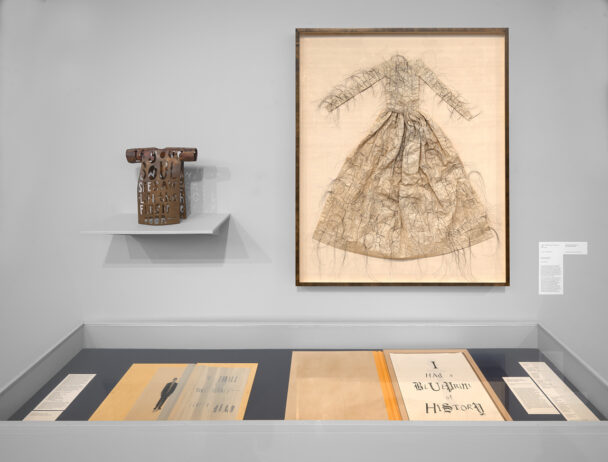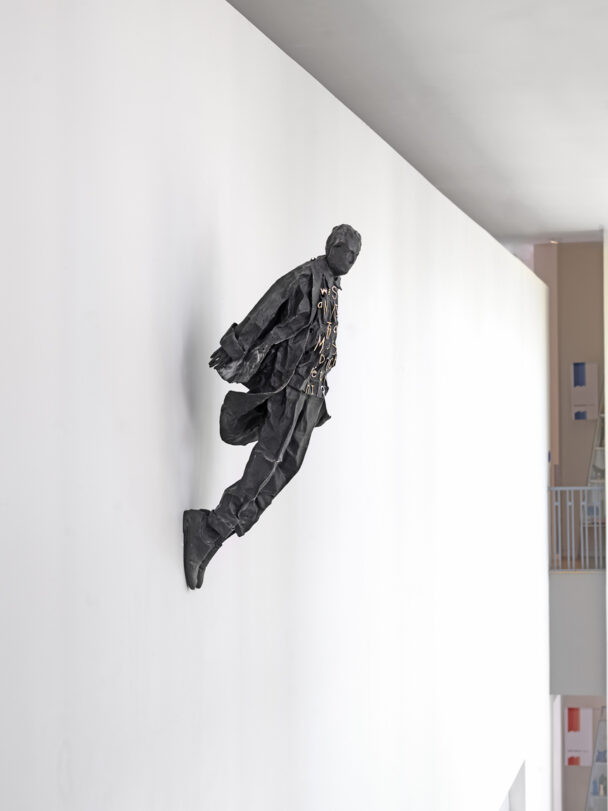A 20-year survey of work by the American artist, the exhibition Lesley Dill features oil pastel drawings, a large-scale metal wall drawing, and bronze and paper sculptures in the Joyce and Edward Linde Gallery, as well as an outdoor sculpture on the Pollock Terrace.
Dill is known for combining language with the human form in a variety of mediums. In her work, she uses text as a mode of communication, as a physical subject, and as a symbol by painting it onto bronze sculptures, stitching it into paper, and sculpting it in metal. The words of poets including Emily Dickinson, Franz Kafka, Salvador Espriu, and most recently Tom Sleigh, inspire and find physical form within her visceral works. Lines of text appear on disembodied heads, hands, and dresses–all reoccurring motifs in Dill’s oeuvre–communicating the artist’s interest in the politics of the figure, psychology, and faith.
Dill calls herself a collector and a creature of language: “I’m interested in the alchemy of language, the uncertainty of meaning and the resonance within our bodies with a metaphor clicks… Language is a manifestation of the human need to reach out. As much as my work is about language, it’s also about what the image does to you, and how the two together make a whole.”
The exhibition at deCordova features sixteen works made between 1993 and 2012. Highlighting Dill’s ambitious artistic experimentation with material as well as the tension between two- and three-dimensional sculpture are Hair Poem Dress (1993), a small dress made of horse hair, thread, and paper; Rush (2006–2007), a 60-foot long mural made of silver foil, organza, and wire; and Wood Word Woman with Wood Word Pedestal (2011), a bust covered with oil stick and silver leaf.
Poems by Emily Dickinson are Dill’s conceptual starting point for several works including Word Made Flesh (2002), a small paper sculpture of an outstretched hand holding a pile of letters; and Rapture’s Germination (2010), a large oil pastel drawing on Tyvek. Here, Dickinson’s words are enlarged, multiplied, and elongated, taking on new shape and meaning through their adaptation into physical form. The visual echoing of letters in Dill’s practice alludes to mantras, prayers, and poetry, all of which are commonly recited repeatedly to enforce meaning and memory.
In her most recent artist’s book, I Had a Blueprint of History, Dill found inspiration in the words of her contemporary, poet Tom Sleigh. The indignation and darkness Dill discovers in Sleigh’s poems counterbalance Dickinson’s references to ecstasy and faith, enabling a full range of emotional and psychological expression for Dill’s images.
Major funding for Lesley Dill has been provided by the Lois and Richard England Family Foundation. Additional support for this exhibition has been provided in part by an anonymous donor, Joyce Linde, and The Meredyth Hyatt Moses Fund.
